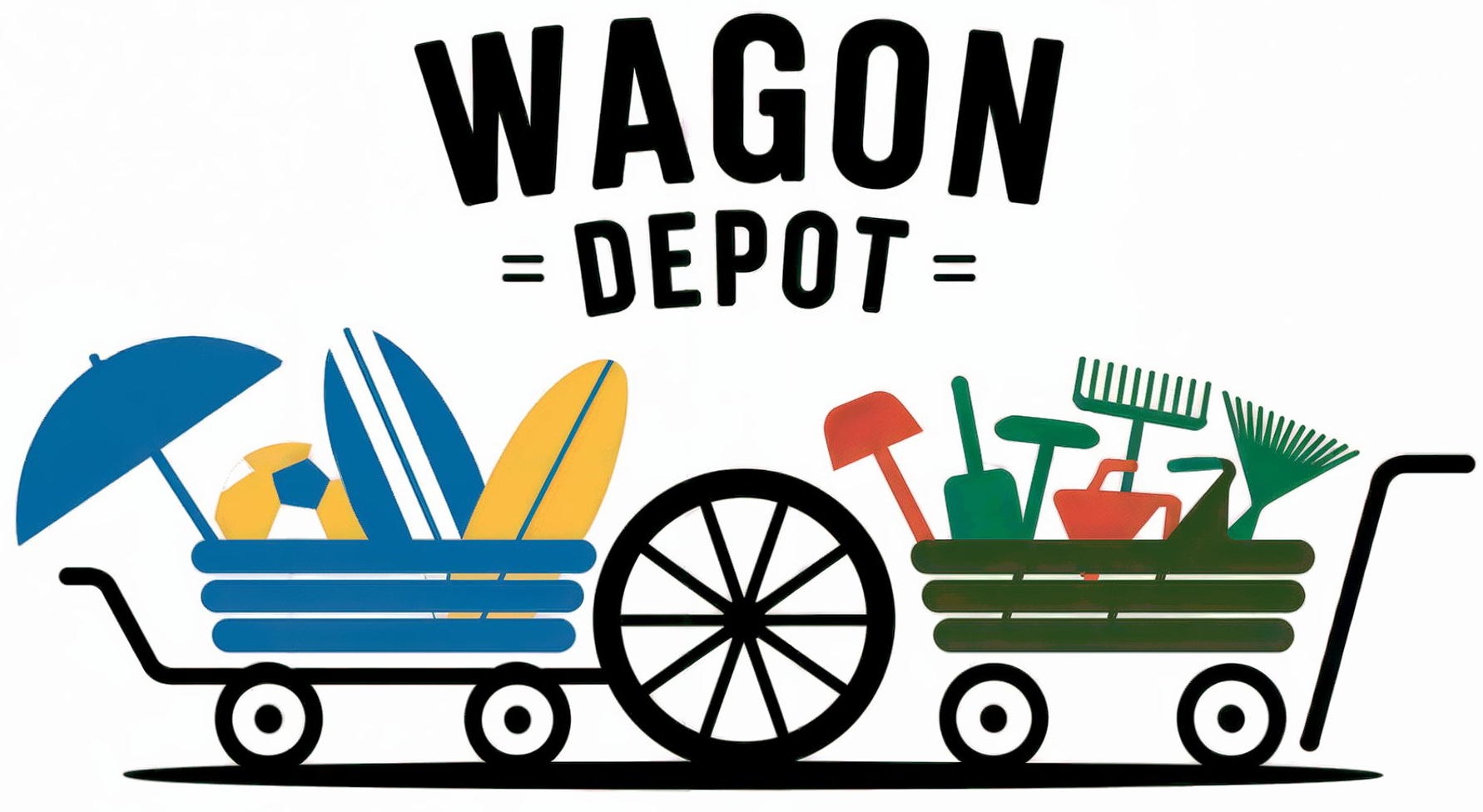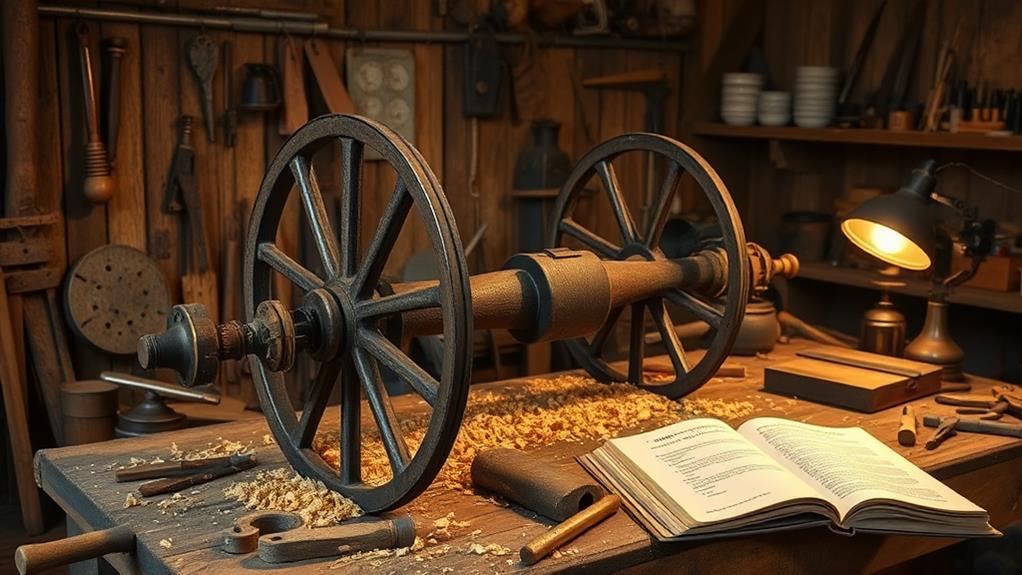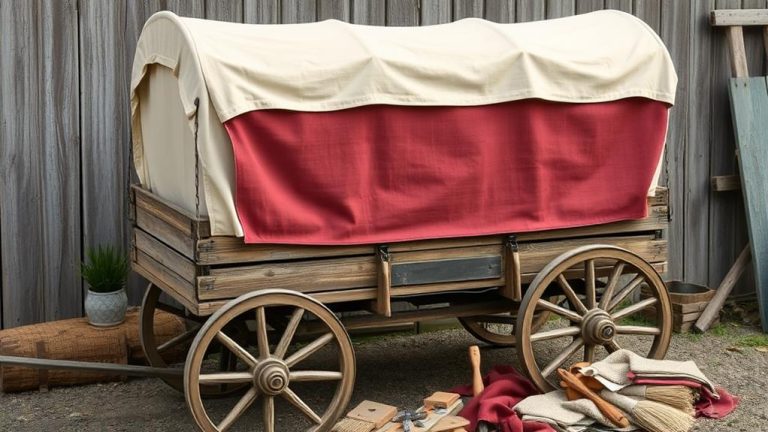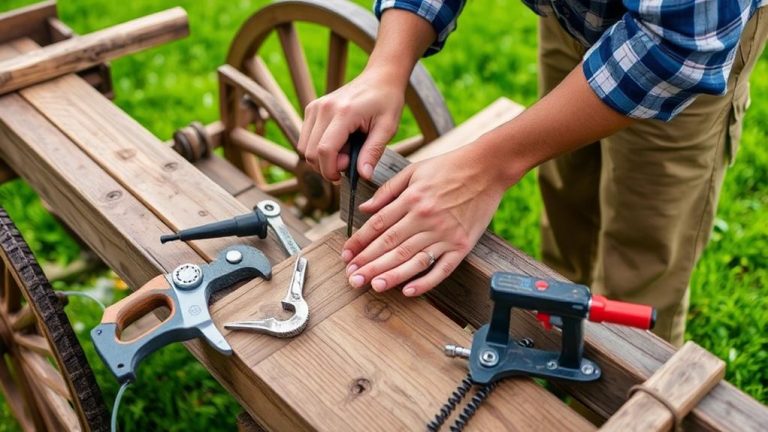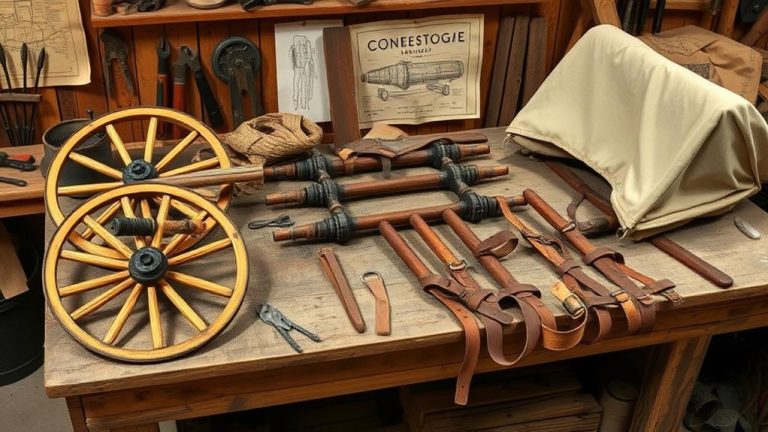To repair antique wagon axles, start by carefully evaluating the damage. Look for cracks, rust, or rot, and gather necessary tools like wrenches, hammers, and woodworking tools. Disassemble the axle by loosening bolts, removing components, and labeling them for easier reassembly. Examine each part’s structural integrity and determine if repairs or replacements are needed, prioritizing original style. Finally, reassemble the axle, ensuring all components fit correctly and lubricate moving parts. Test the axle for movement and stability, listening for any irregular sounds. As you progress, you’ll uncover more crucial techniques and insights for a successful restoration. Pay close attention to the alignment of the axle to prevent future wear or imbalance. Regular maintenance, such as applying protective coatings and checking for signs of deterioration, will help preserve the axle’s longevity. By following these steps, you can achieve the best antique wagon axle restoration, ensuring both functionality and historical authenticity.
Assessing the Damage
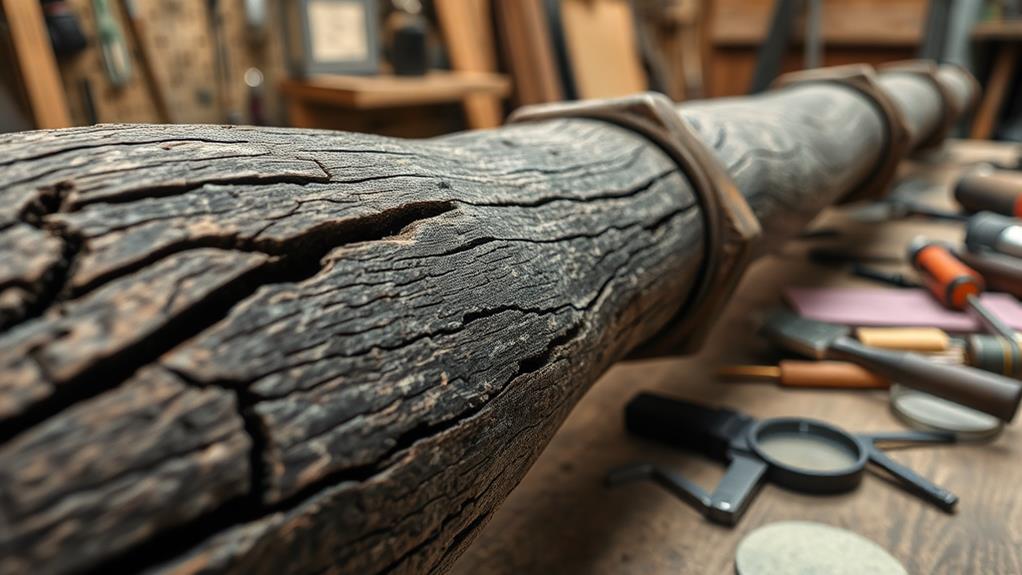
When you begin the process of evaluating the damage to an antique wagon axle, it's essential to approach it systematically. Start by documenting any visible cracks, splits, or signs of wear. Take note of the axle's material types—whether it's wood, metal, or a composite—since each demands a different assessment technique. Wooden axles, often found in historical models, may show signs of rot or insect damage; check for soft spots by applying gentle pressure. For metal axles, look for rust or corrosion, which can compromise structural integrity.
Next, consider the historical significance of the axle. Preserving its authenticity is important, so avoid any repairs that might alter its original form. If you identify major damage, you'll need to determine whether it can be restored or if replacement parts are necessary. Document your findings carefully, as this information will guide your subsequent repair decisions.
Gathering Necessary Tools
To successfully repair an antique wagon axle, you'll need a specific set of tools that cater to the materials and techniques involved in the restoration process. Proper tool selection is important, as using the right instruments guarantees efficiency and precision. Here's a list of vital tools you should gather:
- Wrenches and Socket Set: For loosening and tightening bolts securely.
- Hammers and Mallets: To drive components apart or gently shape metal.
- Woodworking Tools: Such as chisels and saws for axle repair or replacement.
- Measuring Tools: Calipers and tape measures to verify accurate dimensions.
While assembling your toolkit, don't overlook safety precautions. Always wear protective eyewear, gloves, and a dust mask to safeguard against debris and sharp objects. Proper lighting is fundamental too, as it helps you see details clearly and avoids accidents. Make sure your workspace is organized and free of hazards. Being well-prepared not just improves your efficiency but also boosts your confidence as you explore the intricacies of axle repair. With your tools in hand and safety measures in place, you're ready to tackle the disassembly and restoration process ahead.
Disassembling the Axle
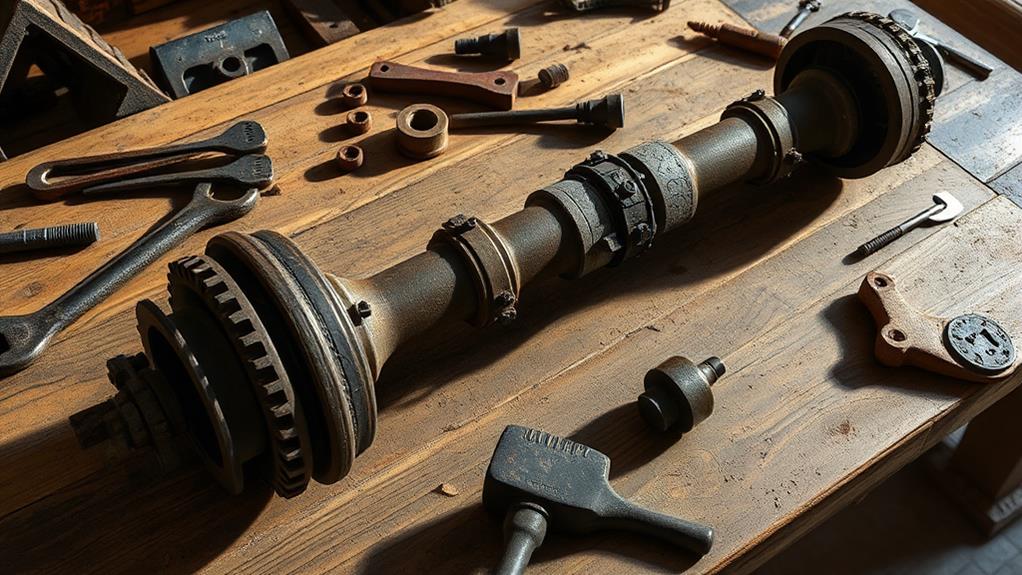
With your tools gathered and safety measures in place, it's time to carefully disassemble the axle. Start by inspecting the axle for any visible damage or unusual wear. Once you've assessed its condition, you'll want to loosen and remove any bolts or fasteners that secure the axle to the wagon frame. A socket set will be your best friend here.
Next, utilize a puller to separate the wheel hub from the axle. Verify you're applying steady pressure to avoid any sudden shifts that could cause damage. Remember, every component plays a role in antique restoration and axle maintenance.
Here's a simple table to keep track of the parts you'll be disassembling:
| Component | Action Required |
|---|---|
| Wheel Hub | Remove using puller |
| Axle Bolt | Loosen and detach |
| Bearing Caps | Unscrew and lift off |
| Spacers | Take note of order |
| Dust Covers | Gently pry off |
As you disassemble, label each part to verify you can easily reassemble them later. This methodical approach will assist you in maintaining the integrity of your antique wagon axle.
Repairing or Replacing Parts
Evaluating the condition of each component is fundamental in deciding whether to repair or replace parts of the antique wagon axle. The choice often hinges on the extent of damage and the availability of antique materials. Different axle types may require specific approaches, so comprehending each component's role is vital.
Here are some key considerations when reviewing parts:
- Structural Integrity: Check for cracks or severe wear; if present, replacement may be necessary.
- Compatibility: Verify that any replacement part matches the original in size and style, especially with antique materials.
- Cost-effectiveness: Weigh the cost of repairs against the price of new parts; sometimes, replacing is more economical.
- Historical Value: Consider the significance of the component—if it's a rare or unique part, repairing it might preserve the wagon's authenticity.
Ultimately, whether you opt for repairing or replacing, keep in mind that maintaining the wagon's integrity and historical value is paramount. Take your time in reviewing each part, as this will influence the overall success of your restoration efforts.
Reassembling and Testing
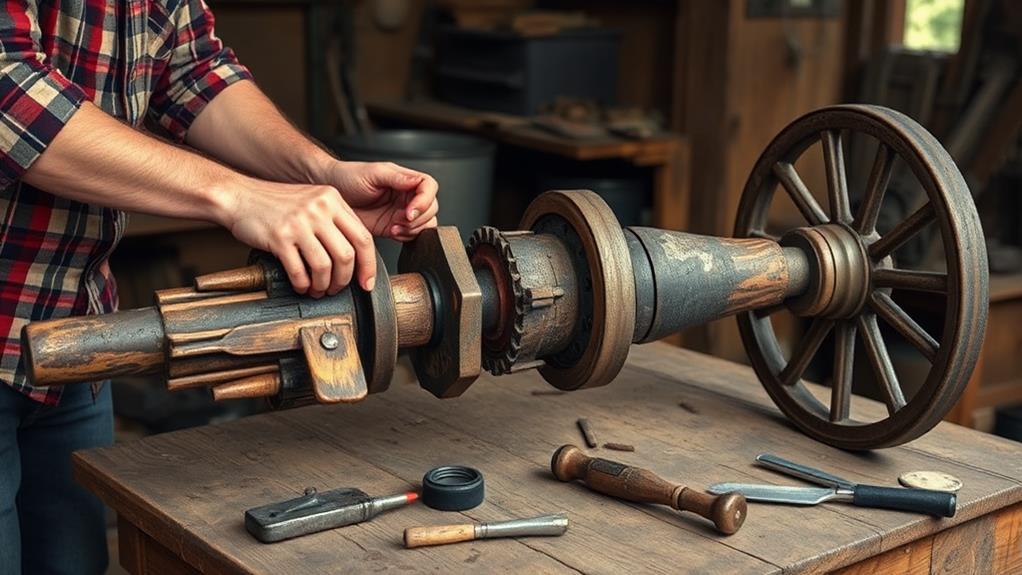
After completing the repairs or replacements, reassembling the antique wagon axle requires a systematic approach to guarantee all components fit seamlessly together. Begin by laying out all the parts in the order you'll assemble them. This helps to make certain you don't miss anything essential.
Before you start, remember to follow safety precautions. Wear gloves and safety goggles to protect yourself from sharp edges and debris. When reassembling, check that all nuts, bolts, and fittings are clean and free from rust. Use appropriate lubrication techniques; apply grease to bearings and moving parts to minimize friction and prevent wear.
As you fit the axle components together, be thorough. Align each part accurately, making sure that they're not forced into place. Once assembled, test for proper movement and stability by manually rotating the axle. Listen for unusual sounds that could indicate issues.
Frequently Asked Questions
How Can I Identify the Type of Antique Wagon Axle I Have?
In order to identify the type of antique wagon axle you have, start by examining its construction and materials. Look for distinctive features like shape, size, and any markings. Research common axle types such as solid, tubular, or composite. You might likewise want to reflect on restoration techniques that align with the axle's specific type. Document your findings, as this will guide your restoration process and help maintain the authentic character of your antique wagon.
What Historical Materials Were Originally Used for Antique Wagon Axles?
When considering historical craftsmanship, you'll find that antique wagon axles were often made from durable materials like wood, iron, and steel. Hardwoods, such as oak and hickory, provided strength and flexibility, in addition metal components offered reinforcement. Many axles featured a combination of these axle materials to guarantee longevity and reliability. Comprehending these elements not just highlights the craftsmanship of the time but furthermore informs your approach to preserving or repairing these historical artifacts.
Are There Specific Safety Precautions to Consider During Repairs?
You might think safety precautions slow you down, but they're crucial for injury prevention. Before starting repairs, make certain you're wearing appropriate safety gear, like gloves and goggles, to protect against sharp tools and debris. Confirm your workspace is clear and well-lit to avoid accidents. If you're using heavy equipment, follow proper lifting techniques. By prioritizing safety, you not solely protect yourself but additionally maintain the freedom to work efficiently and effectively.
Can I Use Modern Tools for Antique Axle Repairs?
You can definitely use modern tools for antique axle repairs, but you need to guarantee their compatibility with traditional materials. During modern tools can expedite the process, they might not replicate the antique repair techniques that preserve authenticity. It's essential to balance efficiency with preservation, using tools like rotary sanders or precision drills carefully. Always consider the integrity of the original design, making sure your repairs improve rather than compromise the wagon's historical value.
Where Can I Find Replacement Parts for Antique Wagon Axles?
When you're on the hunt for replacement parts for antique wagon axles, it can feel like searching for a needle in a haystack! But don't fret; employing effective restoration techniques can lead you to hidden treasures. Start by sourcing materials from specialized antique shops or online marketplaces. Websites dedicated to vintage restorations often carry what you need. Join forums too, where enthusiasts share leads and insights, ensuring your wagon's revival is a triumphant adventure!
